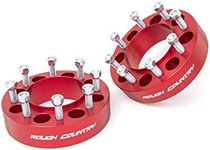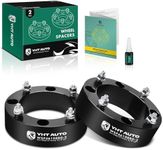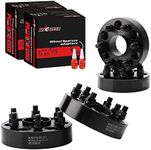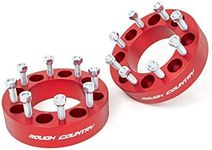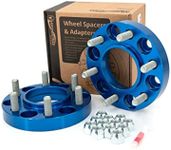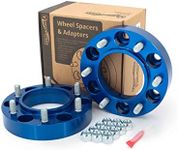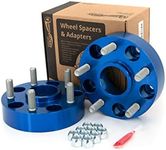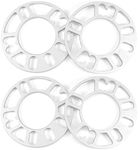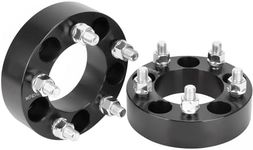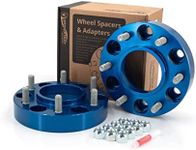Buying Guide for the Best Wheel Spacers
Wheel spacers are components that fit between your vehicle’s wheel hub and the wheel itself, pushing the wheels outward from the hub. People use wheel spacers to improve the stance of their vehicle, allow for larger brake calipers, or achieve a specific look. When choosing wheel spacers, it’s important to focus on compatibility, safety, and the intended use of your vehicle. Understanding the key specifications will help you make a choice that enhances your vehicle’s performance and appearance without compromising safety.ThicknessThickness refers to how far the spacer pushes the wheel away from the hub, usually measured in millimeters or inches. This is important because it affects the stance of your vehicle and the clearance between the wheel and other components like suspension or brakes. Thin spacers (3-5mm) are often used for minor clearance issues, while thicker spacers (10mm and above) can create a wider stance or allow for larger brake calipers. To pick the right thickness, consider why you need spacers: for minor clearance, go thin; for a more aggressive look or to fit aftermarket parts, thicker spacers may be needed. Always ensure the wheels do not stick out past the fenders, as this can be illegal or unsafe.
Bolt PatternThe bolt pattern is the arrangement of the bolts or studs that attach the wheel to the hub, described by the number of bolts and the diameter of the circle they form (for example, 5x114.3). This is crucial because the spacer must match both your vehicle’s hub and your wheels. Bolt patterns are not interchangeable, so always check your vehicle’s specifications. If you’re unsure, consult your owner’s manual or measure carefully. Choosing the correct bolt pattern ensures a secure fit and safe driving.
Center BoreThe center bore is the hole in the middle of the spacer that fits over the hub of your vehicle. This is important because a proper fit keeps the wheel centered and reduces vibrations. Spacers can be hub-centric (with a center bore that matches your hub) or lug-centric (centered by the wheel bolts). For most users, hub-centric spacers are recommended because they provide better alignment and stability. Always match the center bore of the spacer to your vehicle’s hub for the best results.
MaterialWheel spacers are typically made from aluminum or steel. Material matters because it affects strength, weight, and resistance to corrosion. Aluminum spacers are lightweight and resist rust, making them a popular choice for most vehicles. Steel spacers are heavier but can be stronger, which may be important for heavy-duty or off-road use. Choose the material based on your driving style and environment: for daily driving and mild performance, aluminum is usually sufficient; for heavy loads or rough conditions, steel may be better.
Type (Slip-on vs. Bolt-on)There are two main types of wheel spacers: slip-on and bolt-on. Slip-on spacers slide over the existing studs and require longer wheel bolts or studs, while bolt-on spacers attach to the hub with their own set of bolts and provide new studs for the wheel. Slip-on spacers are suitable for small thicknesses and minor adjustments, but for thicker spacers (usually over 10mm), bolt-on types are safer and more secure. Choose the type based on the thickness you need and your comfort with installation.
